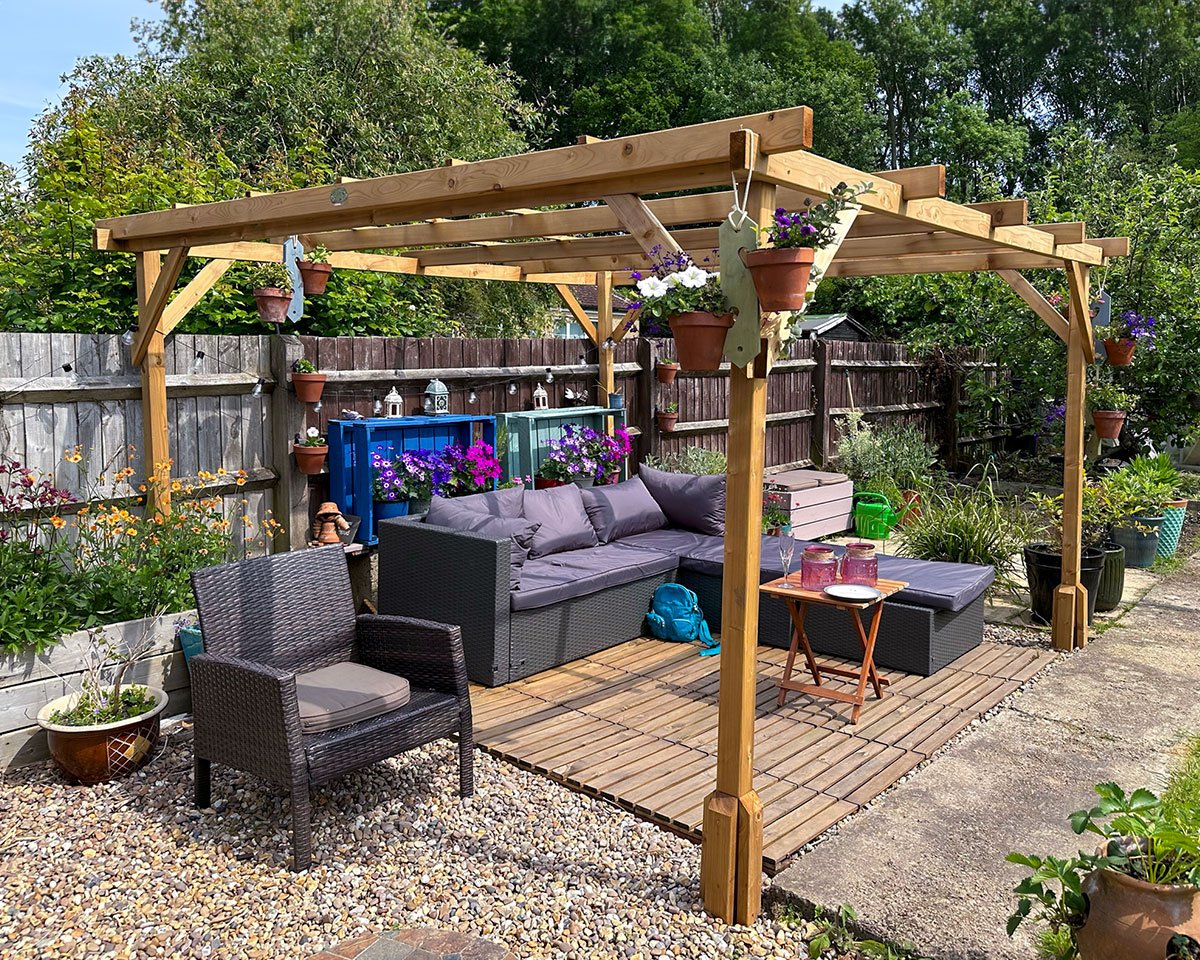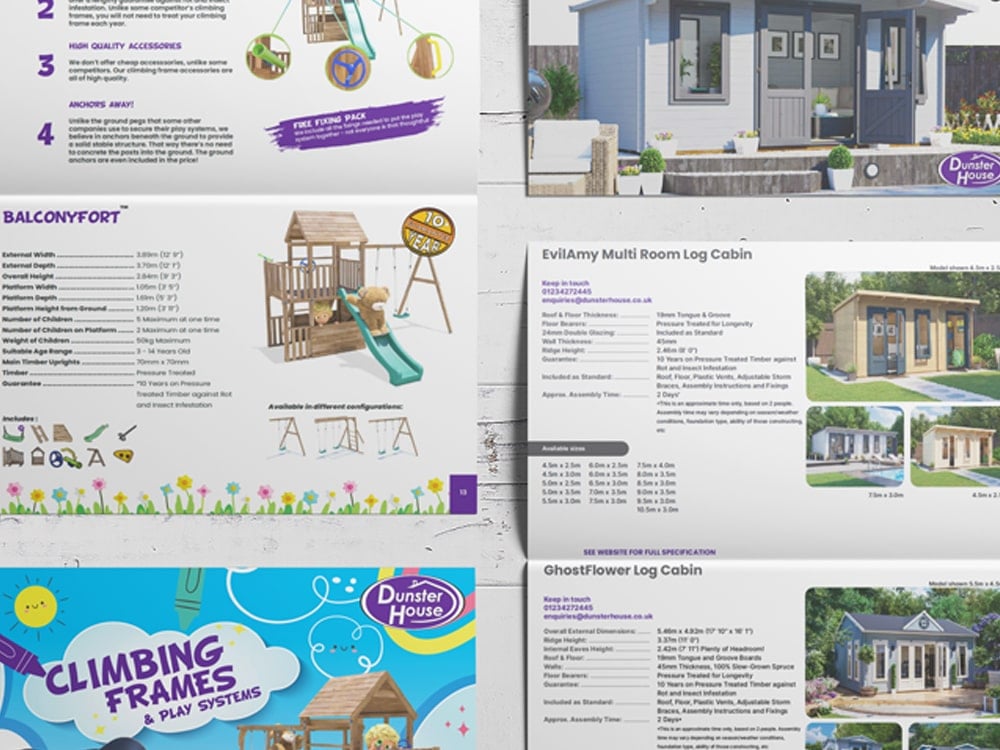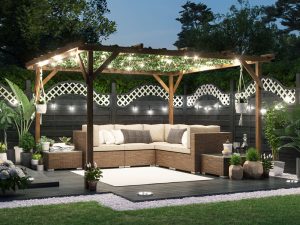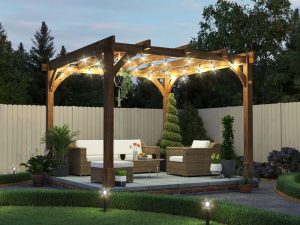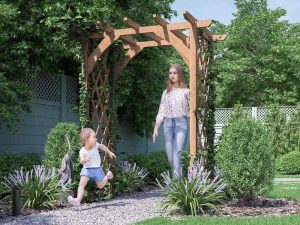Whatever size garden you have, you can always find room to grow plants and flowers. Even a small space can be lifted with a few planters and beds dotted around, or a beautiful pergola that will stand out. Make the most of the space you have to grow produce or flowers, and create a nice ornamental feature too.
Planters
A planter is ideal for growing herbs and salads or making a colourful flower arrangement. You can grow your own lettuce, cherry tomatoes, cucumbers, etc. Or for something a bit different, use your planter to create a fairy garden with miniature plants. This would make a fantastic talking point and will be enjoyed by children and adults alike.
The benefit of a planter is that you can choose where to place it in your garden, depending on whether the type of plants you are growing need a sunny or shaded spot. This way you can make sure they get enough sunlight required for healthy growth. Placing a herb planter by the kitchen door is handy for easy access when cooking.
Planters come in all kinds of shapes and sizes, making them ideal for smaller areas like balconies or porches. They are great for brightening up a courtyard or patio area. Smaller plant pots and containers could even be placed on window sills or along steps.
Raised bed planters are designed for easy gardening, and are perfect for people with mobility restrictions or back or knee problems. These planters are usually raised up on legs so the planting area is at working height. This minimises having to bend or kneel down to sow seeds and bulbs or pick your vegetables and flowers.
Another advantage of a raised bed is that it generally has better drainage than inbuilt beds around the garden. But be sure to keep them well watered during drier times of the year.

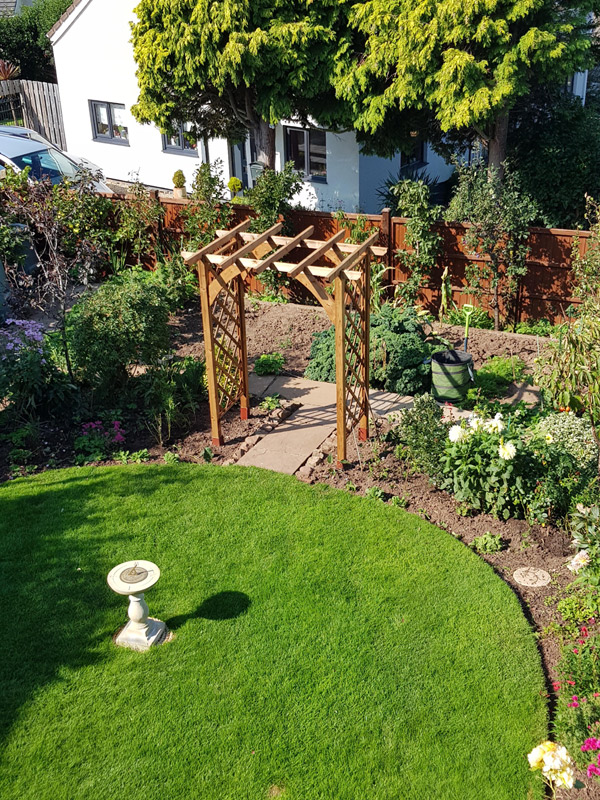
Beds
Beds are great for creating a vegetable patch or kitchen garden in your outdoor space, where you can grow carrots, peppers, onions, etc. Growing your own produce helps you to live a more self sufficient and eco lifestyle. You can cultivate and enjoy home grown food, or decorate your house with a freshly picked bunch of flowers.
You can buy garden beds in a variety of shapes, sizes and heights to suit the space you have in your garden. By including varying levels of beds in your garden landscape design, you can create an attractive and eye catching display.
Use beds to create zoned areas dedicated to growing a particular thing. This means you can keep plants contained where you want them. The soil a plant is grown in will have a huge impact on its sustained healthy growth. The area you live in may not have the best earth for growing. Create the perfect conditions for the chosen plant you want to grow by filling the bed with good quality soil, enriched with nutrients and fertilisation to aid growing. Your new bed will be easy to maintain as weeds can be easily pulled out from the loose soil.
Hanging Baskets
Hanging baskets are perfect for areas of limited space, allowing homes to have fresh grown plants and beautiful blooms. They add instant visual appeal as plants and flowers are at eye level, above where flowerbeds and plant pots usually sit.
It is the chance for you to get creative with your floral arrangements. Add interest to small areas of the garden with cascading flowers and trailing plants that hang from your flower baskets. Mini strawberries or herbs also work well in hanging baskets. If you would like flowers, small flowers are best so that they do not outgrow their container.
The advantage of a hanging basket is that you can choose where to place them in your garden. They can hang from hooks on the side of a wall, fence, garden building, gazebo or pergola. It is an easy way to add a pop of colour and create a tidy-looking display and will look lovely hanging by the side of a doorway. You can easily move hanging baskets around the garden if needed to make sure the plants get the right amount of sun they require.
Hanging baskets are also easy to maintain because they are at a height which means no having to bend down. Remember to water the baskets frequently, but be careful not to overdo it.
Pergolas
The structure of a pergola can be used as a way to grow plants, as well as making it a focal point and beautiful feature in the garden. There are a wide number of plants that a pergola can help support in their growth. Trellis panels can also be attached for more growing areas.
Pergolas are made for creating beautiful arrangements of climbing plants, which can wind around the upright posts and entwine all around the growing lattice on top. Plants such as honeysuckle will attract wildlife and have a lovely perfumed scent. A brightly coloured clematis will liven up your garden, and some types can be grown all year round.
Grape vines or wisteria are fantastic choices for creating a shaded canopy of leaves overhead. This can transform your pergola into a garden room or outdoor living area. Just add some seating for you to sit and relax or a table for you to enjoy some outdoor dining. Grapes are edible too, or you could even attempt to make your own wine if you have a big enough crop.
Arch Pergolas
An arch over a path is another interesting way to use a pergola. A climbing or rambling rose will look beautiful as an archway to pass through as you journey through your garden. Our Jasmine Pergola is ideal for this use with its traditional arch and lattice side panels.
Enhance your pergola with strings of fairy lights or hang lanterns from the frame, to give your garden an ambient glow.
Take a look at our full range of wooden Pergolas available on our website. They are all made from pressure treated timber to protect against rot and insect infestation and come with a genuine 10-year guarantee. Many of them also have the option of adding glazed or wooden wall panels to the structure, to provide privacy and protection from the weather.
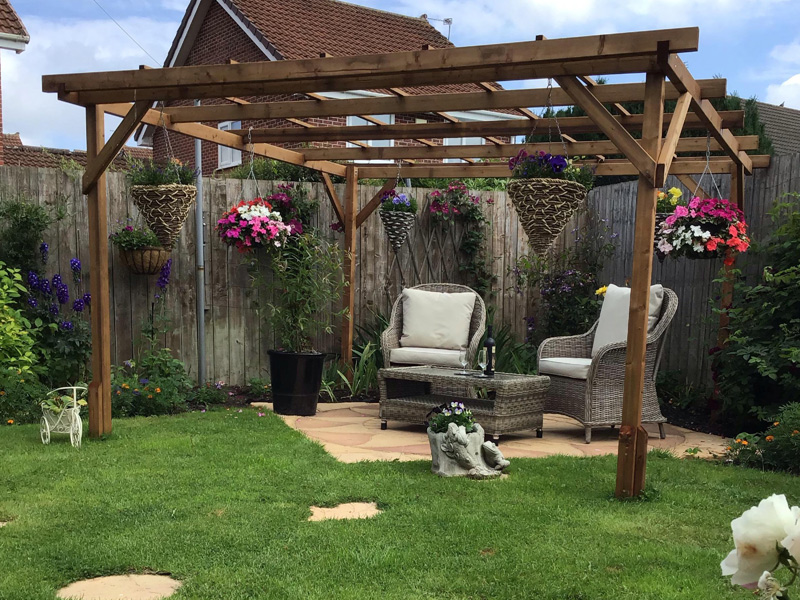
Take into consideration the size of the garden you have, and the types of things you want to grow or enjoy eating, and you can soon plan the perfect area for you. Remember to opt for pergolas, planters and beds that are built from materials that will last, so you can keep on growing throughout the seasons for years to come.


